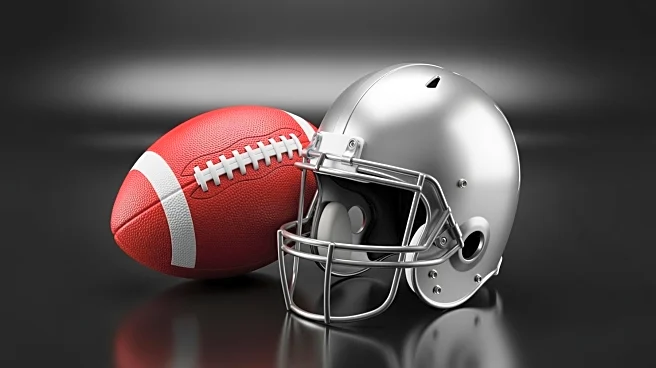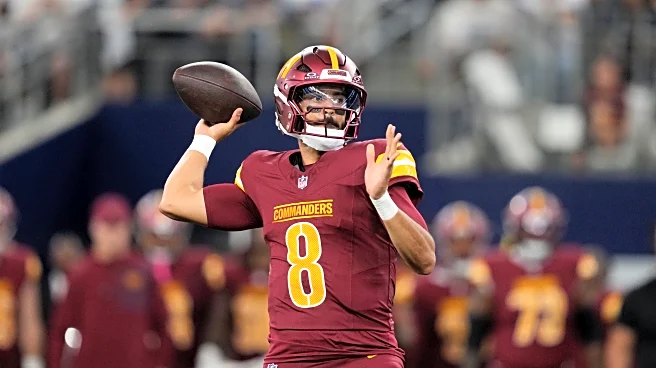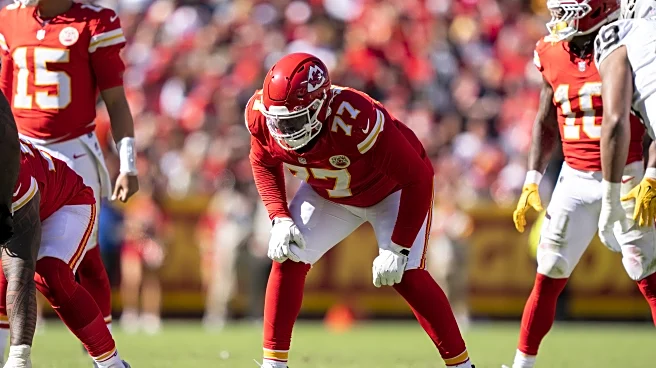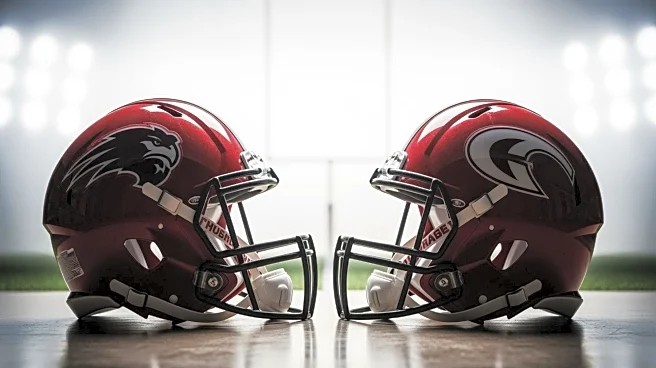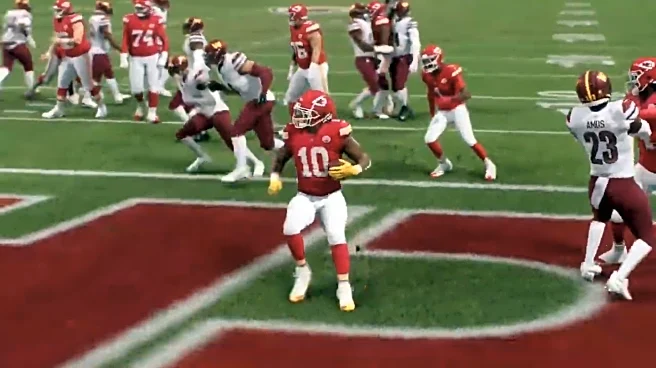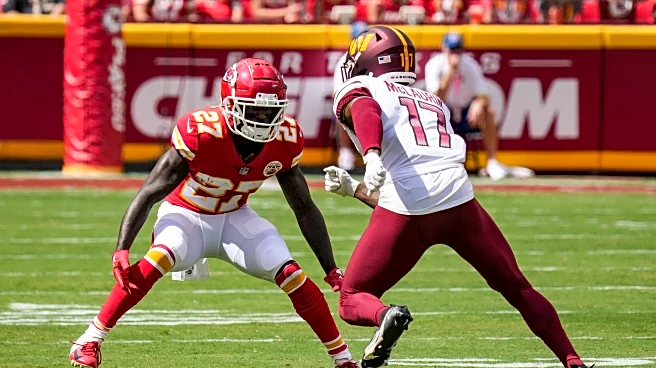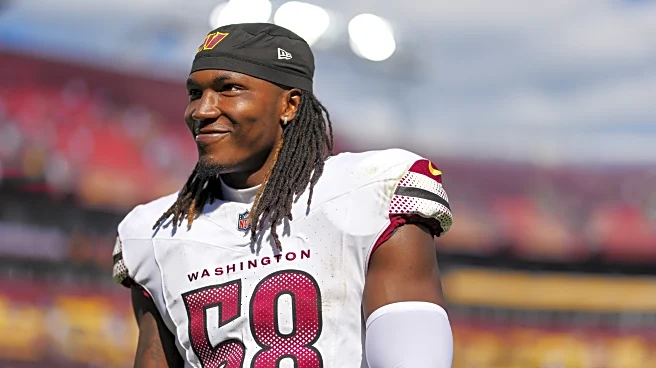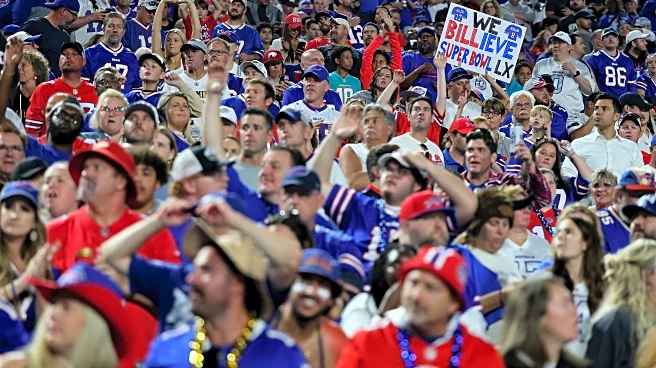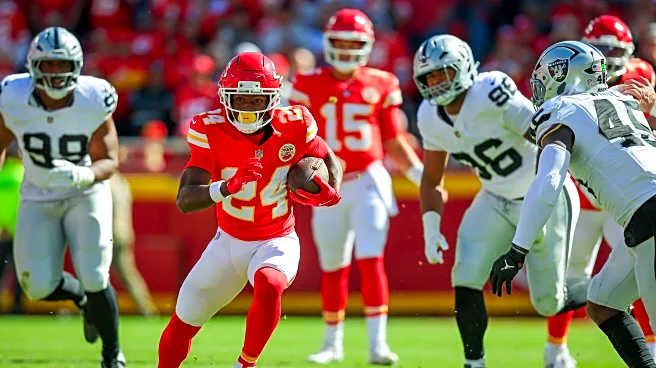What's Happening?
In a Madden NFL simulation, the Washington Commanders faced off against the Kansas City Chiefs on 'Monday Night Football.' The simulation highlighted the Commanders' initial success in exploiting the Chiefs' defense, with quarterback Marcus Mariota leading
the charge. Mariota's performance included a mix of passing and rushing, resulting in two rushing touchdowns. Despite the Commanders' efforts, the Chiefs, led by quarterback Patrick Mahomes, responded effectively. Mahomes showcased his skills with multiple touchdown passes and a rushing touchdown, ultimately leading the Chiefs to a 35-17 victory. The simulation provided a detailed play-by-play of the game, emphasizing key moments such as defensive plays, turnovers, and scoring drives.
Why It's Important?
This simulation offers insights into potential strategies and player performances for both teams. For the Commanders, Mariota's ability to navigate the Chiefs' defense and score rushing touchdowns could be a focal point for future games. However, the Chiefs' ability to counter with strong offensive plays and capitalize on defensive errors highlights their resilience and strategic depth. The simulation serves as a tool for fans and analysts to gauge team dynamics and player capabilities, potentially influencing real-world game strategies and fan expectations.
What's Next?
Following the simulation, the Kansas City Chiefs are set to face the Buffalo Bills in Week 9. This upcoming matchup will test the Chiefs' ability to maintain their winning momentum and adapt their strategies against a different opponent. For the Commanders, analyzing the simulation's outcomes could lead to adjustments in their gameplay, focusing on strengthening their defense and enhancing offensive consistency. Both teams will likely use insights from the simulation to refine their approaches in preparation for future games.
Beyond the Headlines
The simulation underscores the growing influence of virtual sports simulations in shaping fan engagement and team analysis. As technology advances, these simulations become more sophisticated, offering detailed insights into player performance and game dynamics. This trend reflects a broader shift towards integrating technology in sports analysis, potentially impacting coaching strategies and fan interactions.
